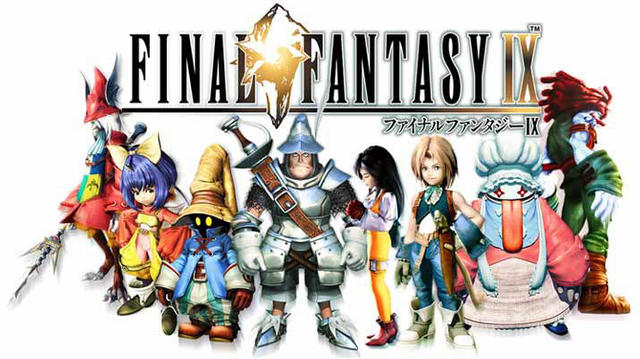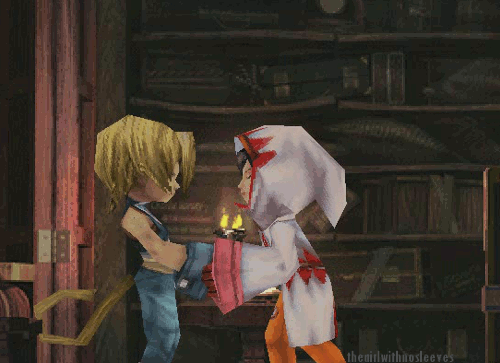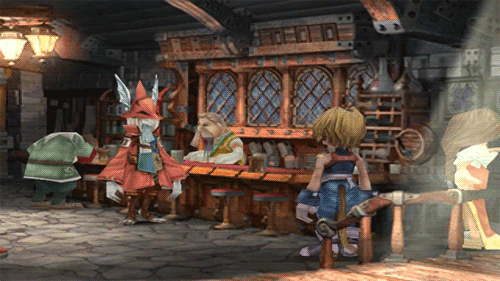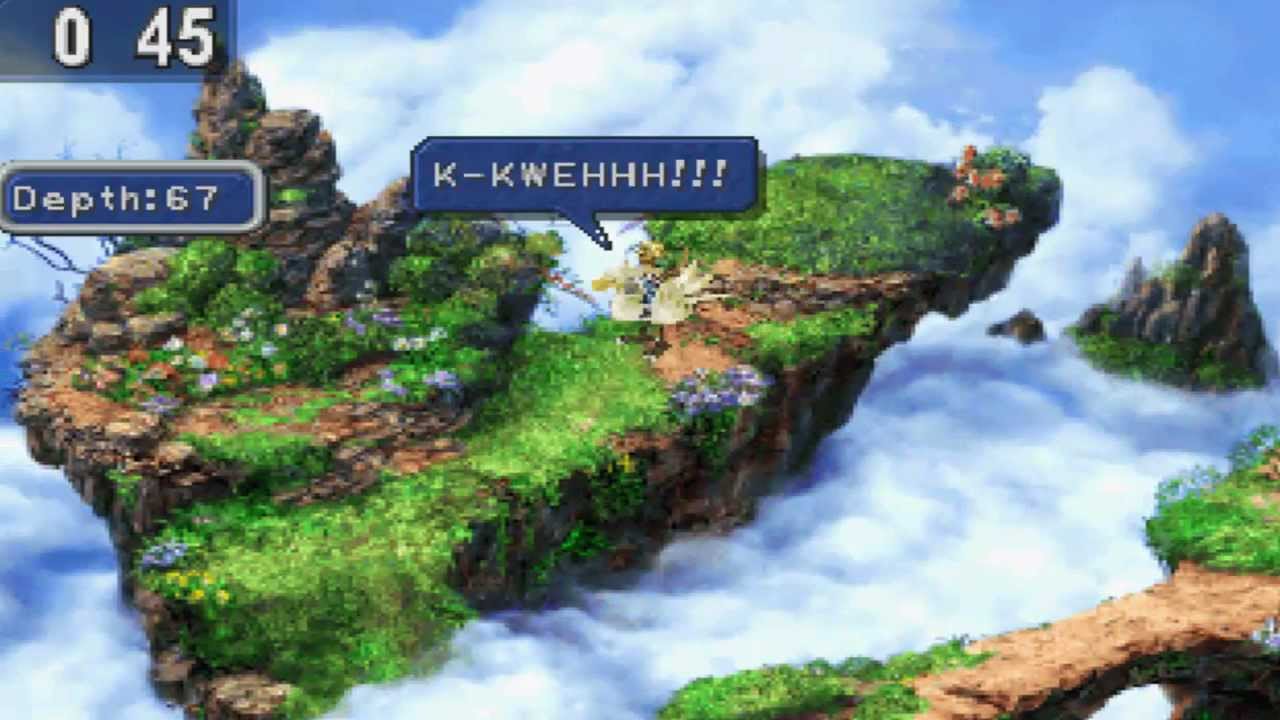Retrogaming
Final Fantasy IX
I love doing my usual retrogaming research, because that usually entails a repeated playthrough of the game I'm going to talk about. Of course, that's not all my "research" encompasses, but without playing the game, what point is there to discussing it, am I right?
You'll have to forgive my Final Fantasy craze, but as far as my teen years have been, I mostly played these games like nobody's bizness. So of course I was going to continue with another FF game: Final Fantasy IX.

THE BACKGROUND
Because of its vast difference from the previous two Final Fantasy installments (VII and VIII), there was much speculation and discussion about whether or not FFIX would even be part of the main series. While VII and VIII both brought the FF series forward to a more realistic, science fiction plus magic-type playthrough, IX took a step back in preference to the older FFs, favoring the old-school fantasy that many FF fans had loved in previous games. Talk about retrogaming, huh?
In the end, IX did eventually become part of the Final Fantasy family as a main game, and honestly, it hit a bit of nostalgic in all manner of FF gaming.
THE PLOT

The story opens up with the Tantalus Theater Troupe, performers by day, thieves and mercenaries by night. Their appearance at Alexandria Castle is two-fold: the first being a performance of their celebrated play, "I Want to be Your Canary," and the second being a kidnapping of Alexandria's beautiful Princess Garnet. While this feat is difficult enough as is, things take an interesting turn when, amidst the chaos of the play and the plotting of the acting troupe, Princess Garnet is also taking measures to get kidnapped as well.
Which confuses Tantalus and the knight sworn to protect the princess. But hey, the show must go on, right?
Turns out Garnet has reason to want to be kidnapped. Her mother, Queen Brahne of Alexandria, has been acting in a power-hungry manner, increasing her hold on the lands outside of Alexandria with the use of her mysterious black mage army. Convinced that Brahne can be talked out of her need to conquer, Garnet uses Tantalus to help her reach Lindblum, where she can request the aid of Lindblum's Regent--and uncle.
But it's not so simple, and ultimately, there are more sinister workings afoot that could shake the very world in which Garnet and her friends live.
THE CHARACTERS

FFIX has a vast and diverse list of characters. Of the eight main playable characters, only two are unarguably human, while two others possess mostly-human traits (but are ultimately a different race). Zidane--the main character of the game--is an interesting mix of human and monkey, and only much later in the game do we even find out what kind of race he is. As far as the non-humans went, the list encompasses pretty much most--if not all--of the types of peoples in Gaia: there's the black mage (Vivi), the stalwart Burmecian (Freya), the frog-loving Qu (Quina), and the horned Summoner (Eiko).
It is this diversity that brings the story to life, because the first half of the story is largely character-driven. Garnet wants to help snap Brahne out of her power-hungry stupor, so she endeavors to get herself kidnapped. For reasons of his own, Zidane wants to help Garnet reach her destination. Vivi discovers the manipulated black mages and wants to know more of where they come from. Freya searches for her long-lost love, only to return to Burmecia in order to protect her home and king. In a similar vein, Steiner, Quina, Eiko, and Amarant are all characters who help turn the tide of the story. Each character holds a key to the plot, and without the character's motivation, there isn't much of a game to play in the long run.
THE WORLD

Now, while the characters are certainly memorable and quite fantastic, it is the world of Final Fantasy IX that took in my interest. As I mentioned before, the game went back to its more retro-fantasy roots. However, it is not without its fair share of progress and technology. In fact, the best bit of this game comes solely from its steampunk aesthetic. I mean, come on, the first CGI opening scene gives you a view of Alexandria whilst riding on a Mist-driven airship. The Mist Continent alone powers airships with its Mist, though upon reaching Lindblum, the gamer will find that technology is moving towards steam-tech. Just...it's brilliant.
If Mist-tech and steam-tech weren't enough, there are places upon the world of Gaia that look and feel, and even sound fantastic. For the most part, the sentient races live in the Mist Continent, where the kingdoms of Alexandria, Lindblum, Burmecia, and Cleyra are found. Each kingdom holds a particular trait that makes it stand out from the other kingdoms: Alexandria is a picturesque land in its almost Old World setting; Lindblum is technologically-advanced and certainly one of my favorite places for its steam innovation and artistic revelry; Burmecia is a land of constant darkness and rain and warmongering dragon knights; and Cleyra is an isolated paradise hidden behind a dangerous sandstorm (this magical storm of sand is one of the reasons why Cleyra is my favorite place--the other reason being that Cleyra is an extension of Burmecia, and Freya's race is my favorite of those in the game).
As the game progresses, you are also able to visit the continents outside of the Mist Continent, from the arid desert wastelands of the Outer Continent, to the icy tundras of the Lost Continent, to the ruinous and mystical Forgotten Continent, and even as far as outer space (yeah, don't ask, this is as much as I'm willing to say in the matter).
THE GAMEPLAY

True to its retro-roots, FFIX goes back to the playing system of older Final Fantasy games. There are eidolons--which is the older Final Fantasy equivalent of summoned monsters. There are character classes such as thieves, mages, and warriors. There are weapons and skills and numerous items to collect in order to improve and upgrade characters. There are several improvements, of course, including ATE scenes where the player is able to view character events happening around the world. ATEs add richness to the story, and without them, what's the point of playing the game?
I will admit, however, that much of the time I spend on FFIX is on its numerous side quests. I mean, sure, I could spend hours just exploring the world for its magic and steampunk, but I choose to go into chocobo forests instead. I choose to catch frogs, search for Stellazio coins and coffee, play cards, send letters to moogles, and hunt treasure. Heck, by the time I reach the end of the game, I'll have played over a hundred hours just trying to complete all of the side quests.

Speaking of which, that's what I should be doing right now.






